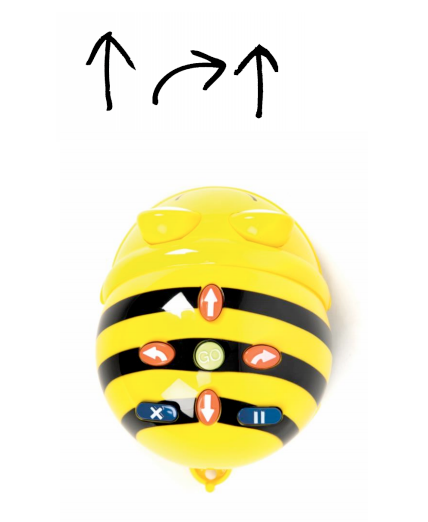In this lesson, our focus is on teaching students the importance of planning their instructions before inputting them into the Bee-Bot.
Demonstrate how to use a whiteboard to draw arrows and map out routes for the upcoming activities.
By planning their moves in advance, students will develop stronger problem-solving skills and a better understanding of sequencing, which are crucial for successful programming. This step ensures that when they input their commands into the Bee-Bot, they are confident and clear about the intended path.
The goal of this game is to help the LadyBird-Bot find animals by giving it the correct commands. Begin by showing the students the interactive whiteboard game and explain that the LadyBird-Bot needs to find an animal on the grid.
Divide the students into small groups and provide each group with a Bee-Bot, a mat with a grid, flower printouts, and whiteboards with markers.
Explain to the groups that they need to choose a starting point for the Bee-Bot and place a flower on a different location on the grid. Their task is to write down the complete sequence of commands needed to guide the Bee-Bot to the flower by drawing arrows on their whiteboards.
Give each group whiteboards and markers and instruct them to draw arrows representing the directional commands (forward, backward, left turn, right turn) on the whiteboards. They should carefully plan and draw the sequence of arrows needed to move the Bee-Bot from the starting point to the flower.
Once the groups have drawn their directions, have them input the commands into the Bee-Bot according to their arrow sequences. After programming the Bee-Bot, let the groups test their commands by running the Bee-Bot on the grid.
